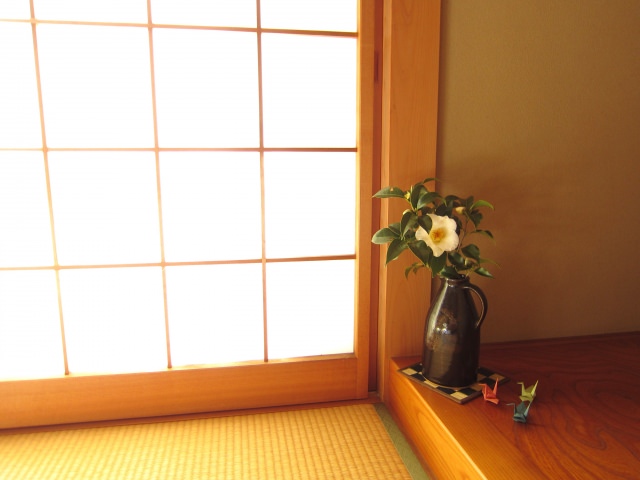-
- USA/Canada 1-800-285-2726
- Australia (02) 8006 4411

Chabana, which means tea flowers
, is the term used for the arrangement of flowers (Ikebana) used for a traditional Japanese tea ceremony (Sado). The display of flower arrangements for the tea ceremony is appreciated in the traditional Ikebana style, but is called Chabana because it is used specifically for the tea ceremony. Chabana stems back as old as tea ceremonies, and uses the nage-ire
style of flower arranging to allow the natural beauty of the flowers to be on display during the tea ceremony. Chabana are one of the main focuses for guests at a tea ceremony, displayed in a way that would draw attention without overpowering the guests. The tokonoma
(an area set for displays) often features the flower arrangement, along with a hanging scroll that includes poetry, zen phrases, or other writing in calligraphy. Chabana, like many of Japan's arts and crafts, is heavily influenced by the seasons. The flowers on display often reflect the seasons and are matched with a variety of vases, whichever that best captures the atmosphere and season of the flowers. While there are flowers displayed based on the season, it is also important to not use flowers deemed unfit for use. These flowers are called kinka
and are ruled out due to various circumstances, including scent, season, and flower name to list a few. The beautiful flowers arranged for Chabana can be appreciated during a tea ceremony, and is the perfect way to set the tone of the room, whether it's for a formal, moderate, or relaxed ceremony (shin, gyo, so).
Enjoy the beautiful Japanese flower arrangements during your tea ceremony, standard on of Japan Deluxe Tour's vacation packages between Tokyo & Kyoto. You can also add a Chabana day trip with our affordable line of day-trips to learn how to make your own beautiful Japanese flower arrangements during your next vacation!
The Way of Tea
Traditional Japanese art of flower arrangements
Hanafuda (literally flower cards) are Japanese playing cards that are used to play a variety of games
Tracing it's origins to the Chinese Zheng, the Koto is a traditional Japanese stringed instrument.
tea ceremony with massive cups
Composed of a Museum, Tea House and Garden
Pick Fresh Green Tea Leaves in Traditional Clothing
Maple leaf shaped manju with red bean paste filling